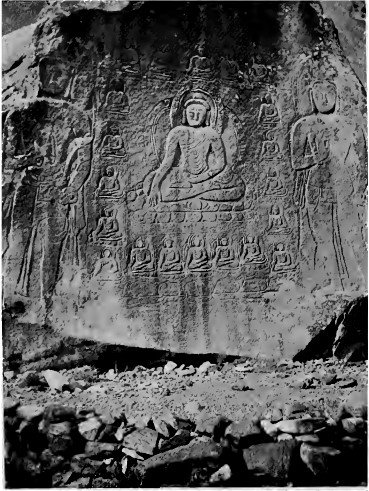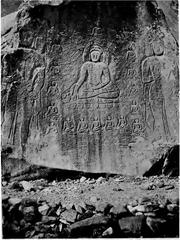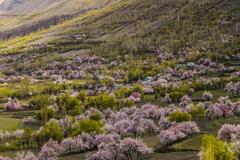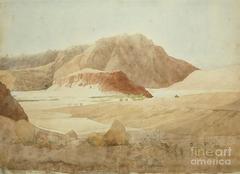
Visiting Manthal Buddha Rock: History, Tickets, and Tips
Publication Date: 20/07/2024
Introduction to Manthal Buddha Rock
The Manthal Buddha Rock, nestled in the heart of Skardu, Pakistan, is a monumental testament to the region’s rich cultural and religious tapestry. Dating back to the 8th century CE, this ancient rock carving is not only a significant archaeological site but also a vivid reminder of Buddhism’s historical presence in the region. The Manthal Buddha Rock features an intricately carved image of Buddha surrounded by smaller figures and inscriptions, reflective of the Gandhara art that flourished during this period. Its discovery in the early 20th century captivated historians and archaeologists, prompting numerous studies that have since illuminated the region’s Buddhist past. Visitors today are drawn to this remarkable site, eager to explore its historical significance and the intricate artistry that it embodies.
Table of Contents
- Introduction
- History of Manthal Buddha Rock
- Visitor Information
- Preservation Efforts
- Comparisons with Other Buddhist Sites
- Travel Tips and Nearby Attractions
- Modern-Day Relevance
- Challenges and Future Prospects
- Frequently Asked Questions (FAQ)
- Conclusion
Visiting the Manthal Buddha Rock in Skardu - History, Tickets, and Travel Tips
History of Manthal Buddha Rock
Discovery and Initial Studies
The Manthal Buddha Rock, located in Skardu, Pakistan, is an ancient rock carving that dates back to the 8th century. This significant archaeological site was discovered in the early 20th century by European explorers and has since been the subject of numerous studies by historians and archaeologists. The rock carving is a testament to the region’s Buddhist past, which predates the arrival of Islam in the area.
Historical Context
During the 8th century, the region now known as Gilgit-Baltistan, where Skardu is located, was a significant center for Buddhism. This period saw the flourishing of Buddhist art and culture, influenced by the Gandhara civilization. The Manthal Buddha Rock is one of the many remnants of this era, showcasing the intricate artistry and religious devotion of the time.
Artistic and Cultural Significance
The Manthal Buddha Rock features a large image of Buddha, carved into a granite boulder. The carving depicts Buddha in a meditative pose, surrounded by smaller figures and inscriptions. This style is characteristic of the Gandhara art, which combined Greco-Roman artistic techniques with Buddhist themes. The detailed craftsmanship of the carving indicates the high level of skill possessed by the artists of that period.
Visitor Information
Manthal Buddha Rock Visiting Hours
The Manthal Buddha Rock is generally open to visitors from sunrise to sunset. It’s best to visit during daylight hours to fully appreciate the intricate details of the carvings.
Tickets and Guided Tours
There is no entry fee to visit the Manthal Buddha Rock. However, hiring a local guide can enrich your experience by providing historical context and detailed explanations of the carvings. Guided tours are available through local tour operators in Skardu.
Best Times to Visit
The best time to visit the Manthal Buddha Rock is during the spring and autumn months when the weather is mild and pleasant. Summers can be hot, and winters are quite cold, so plan your visit accordingly.
Preservation Efforts
Over the years, the Manthal Buddha Rock has faced various threats, including natural erosion and human vandalism. Efforts to preserve this historical site have been ongoing, with local and international organizations working together to protect and maintain the carving. In recent years, the government of Pakistan has taken steps to promote the site as a tourist attraction, which has helped raise awareness about its historical significance.
Influence on Local Culture
The presence of the Manthal Buddha Rock has had a lasting impact on the local culture of Skardu. While the region is predominantly Muslim today, the Buddhist heritage is still evident in various aspects of local traditions and folklore. The rock carving serves as a reminder of the region’s diverse religious history and its role as a crossroads of different cultures and civilizations.
Archaeological Studies
Several archaeological studies have been conducted on the Manthal Buddha Rock, providing valuable insights into the history and culture of the region. These studies have revealed that the site was likely a place of worship and pilgrimage for Buddhists in the area. The inscriptions on the rock have been analyzed to understand the religious practices and beliefs of the time.
Comparisons with Other Buddhist Sites
The Manthal Buddha Rock is often compared to other significant Buddhist sites in the region, such as the Bamiyan Buddhas in Afghanistan and the Ajanta Caves in India. While it is smaller in scale, the Manthal Buddha Rock shares similar artistic and cultural characteristics with these sites. These comparisons highlight the interconnectedness of Buddhist art and culture across different regions of Asia.
Travel Tips and Nearby Attractions
Photographic Spots
The Manthal Buddha Rock offers numerous opportunities for photography. Early morning or late afternoon light provides the best conditions for capturing the intricate details of the carvings.
Nearby Attractions
- Skardu Fort - Also known as Kharpocho Fort, this historic site offers stunning views of the Skardu valley and is a short drive from the Manthal Buddha Rock. (Skardu Fort)
- Satpara Lake - A beautiful lake located about 9 kilometers south of Skardu, perfect for a day trip. (Satpara Lake)
- Deosai National Park - Known as the ‘Land of Giants,’ this park is famous for its breathtaking landscapes and diverse wildlife. (Deosai National Park)
Modern-Day Relevance
Today, the Manthal Buddha Rock is not only a historical monument but also a symbol of cultural heritage and religious tolerance. It attracts tourists, historians, and researchers from around the world, contributing to the local economy and promoting cultural exchange. The site serves as an educational resource, helping people understand the rich history and cultural diversity of the region.
Challenges and Future Prospects
Despite the efforts to preserve the Manthal Buddha Rock, challenges remain. Environmental factors, such as weathering and pollution, continue to pose a threat to the site. Additionally, the lack of adequate funding and resources for preservation efforts is a significant concern. However, with continued support from the government and international organizations, there is hope that the Manthal Buddha Rock will be preserved for future generations to appreciate and learn from.
Frequently Asked Questions (FAQ)
What are the visiting hours for Manthal Buddha Rock? The site is open from sunrise to sunset.
Are there guided tours available at Manthal Buddha Rock? Yes, guided tours are available through local tour operators in Skardu.
Is there an entry fee to visit the Manthal Buddha Rock? No, there is no entry fee.
What is the best time to visit Manthal Buddha Rock? Spring and autumn are the best times to visit due to mild weather conditions.
Conclusion
The Manthal Buddha Rock in Skardu, Pakistan, is a remarkable historical site that offers a glimpse into the region’s Buddhist past. Its intricate carvings and inscriptions provide valuable insights into the art, culture, and religious practices of the 8th century. Despite facing various challenges, ongoing preservation efforts aim to protect this cultural heritage site for future generations. The Manthal Buddha Rock stands as a testament to the rich and diverse history of Gilgit-Baltistan and its significance in the broader context of Buddhist art and culture.
Call to Action
For more information on visiting the Manthal Buddha Rock and other historical sites in Skardu, download the Audiala app, check out our other related posts, or follow us on social media for more updates.
Summary and Key Points
The Manthal Buddha Rock stands as an enduring symbol of Skardu’s historical and cultural heritage. Despite facing challenges such as natural erosion and human vandalism, ongoing preservation efforts aim to protect this invaluable site for future generations. Visiting the Manthal Buddha Rock not only offers a unique glimpse into the region’s Buddhist past but also underscores the importance of cultural preservation and religious tolerance. As a pivotal historical monument, it continues to attract tourists, historians, and researchers from around the world, contributing to the local economy and promoting cultural exchange. By respecting and supporting preservation initiatives, visitors can ensure that this remarkable testament to the 8th-century artistry and devotion remains a source of inspiration and knowledge for years to come.
References
- Visiting the Manthal Buddha Rock in Skardu - History, Tickets, and Travel Tips, 2024, Audiala source
- Visiting Manthal Buddha Rock - History, Tickets, and Travel Tips, 2024, Audiala source
- Visiting Manthal Buddha Rock - Hours, Tickets, and Essential Tips for Exploring Skardu’s Historical Sites, 2024, Audiala source


